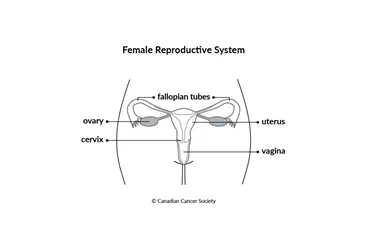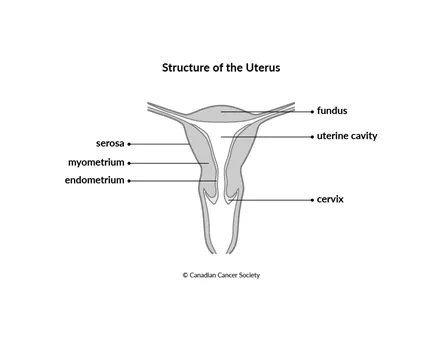The uterus
The uterus, or womb, is the part of the female reproductive system where a baby grows. It's above the vagina, between the bladder and rectum. It's about 7 cm long and 5 cm across at the widest point. The uterus is held in place within the pelvis by several ligaments.
The female reproductive system is made up of internal organs, including the vagina, uterus, ovaries and fallopian tubes. It also includes the external genital organs (the parts that make up the vulva). All the internal organs are in the pelvis, which is below the abdomen and between the hip bones.

Structure
The uterus is a muscular organ that is shaped like a pear. It has 3 parts:
- The fundus is the top of the uterus.
- The body is the main part of the uterus and includes the uterine cavity.
- The cervix is the lower, narrow part of the uterus.
The uterus has 3 layers:
The endometrium is the inner layer that lines the uterus. It's made up of glandular cells that make secretions.
The myometrium is the middle and thickest layer of the uterus wall. It's made up mostly of smooth muscle.
The serosa is the outer layer that covers and protects the uterus.

Function
The uterus can receive a fertilized egg, and it can protect the fetus (baby) while it grows and develops. The uterus contracts to push the baby out of the body during birth.
Every month, except when a woman is pregnant or has reached
Your trusted source for accurate cancer information
With support from readers like you, we can continue to provide the highest quality cancer information for over 100 types of cancer.
We’re here to ensure easy access to accurate cancer information for you and the millions of people who visit this website every year. But we can’t do it alone.
Every donation helps fund reliable cancer information, compassionate support services and the most promising research. Please give today because every contribution counts. Thank you.
